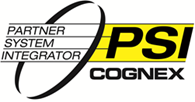Picking
Many variants of a part are fed to a machine and managed, in several cases it is more effective to feed the parts to a general picking area and then locate the part using a vision system. It generally requires a more flexible picking device, for example a robot, servo controlled gantry robot or other device where positions can be programmed in conjunction with the vision systems coordinates.
The type of lighting can vary from background lighting, led lighting or laser lighting, these are used to secure a consistent picking.
Different types of conveyors can be used to separate and transport parts to picking positions. Feeding of the conveyor can be done manually by the operator and also via a pallet tipper, so that the product is tipped gradually onto the conveyor.
When it comes to heavy and large parts, these can be picked directly from the pallet in a predefined pattern with guidance from a vision system or position sensors. If the product comes in bulk, the use of “bin-picking” can be utilised. For this to be viable, it is important that the parts have appropriate shape and form.
Robot vision
En typical application used with high volumes is to feed products on a conveyor under a camera. The conveyor is connected to a encoder that measures how far the conveyor has moved since the image was taken. The image is analysed by software and the pick position for one or more parts is sent to a robot, the robot then picks the parts while in movement from the conveyor.
One or more robots can be placed after each other and pick products from the conveyor. An ABB Flexpicker robot is commonly used with high volumes as it has a picking speed cycle of 0,5 seconds. By utilising a vision system, a robot can pick and mange different variants more easily and changeover between products is simpler.
We propose the most suitable feeding method for your production and we are not restricted by specific technology.





